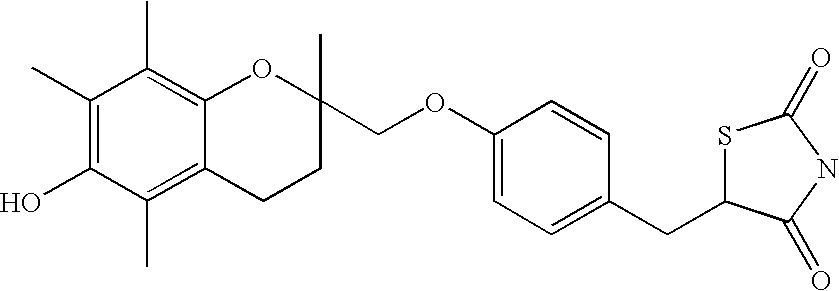Method for identifying drug metabolites with dansylated glutathione
a technology of dansylated glutathione and drug metabolites, which is applied in the field of sensitive and quantitative methods employing fluorescently labeled trapping agents, can solve the problems of lack of scientific understanding, difficult and elusive task of preclinical prediction of adverse reactions of drug candidates, and lack of animal models
- Summary
- Abstract
- Description
- Claims
- Application Information
AI Technical Summary
Benefits of technology
Problems solved by technology
Method used
Image
Examples
example 1
Synthesis and Application of dGSH as a Fluorescent Trapping Agent
[0011]Dansyl chloride was used in the early days of protein chemistry to derivatize terminal amino acids. The current method utilizes the fluorescent nature of the dansyl group to derivatize glutathione at the free amino group of glutamyl moiety. Since thiol groups react with dansyl chloride as well, oxidized glutathione is used. After dansyl derivatization, dithiothreitol is used to reduce the disulfide bond yielding the final dansyl glutathione product. The identity of dGSH is confirmed by MS / MS fragmentation (FIG. 1). A slow HPLC gradient was developed to ensure enough separation of dGSH with potential dGSH trapped reactive metabolites. As shown in FIG. 2, dGSH is adequately separated from the oxidized dGSH (dGSH dimer) that was formed during the incubation. dGSH is used in a large excess (20 times more than substrate concentrations), and some background peaks clustered around the dGSH peak in the blank chromatogram...
example 1.1
Troglitazone
[0018]Troglitazone was associated with idiosyncratic liver toxicity and was subsequently withdrawn from the market. (Kassahun, K., Pearson, P. G. et al., Chem Res Toxicol, 2001, 14(1), 62–70; Tettey, J. N., Maggs, J. L. et al., Chem Res Toxicol, 2001, 14(8), 965–74; Graham, D. J., Green, L. et al., Am J Med, 2003, 114(4), 299–306; and Smith, M. T., Chem Res Toxicol, 2003, 16(6), 679–87). Consistent with literature reports regarding GSH adducts, the major peak has a mass of 779 amu and corresponds to the direct addition of dGSH to troglitazone.
example 1.2
[0019]Clozapine is associated with increased incidences of agranulocytosis. (Maggs, J. L. et al., J Pharmacol Exp Ther, 1995, 275(3), 1463–75; Gardner, I. et al., Mol Pharmacol, 1998, 53(6), 991–8; and Iverson, S. et al., Chem Biol Interact, 2002, 142(1–2), 175–99) Two peaks were found in the chromatogram that had a mass of 833 amu, this is consistent with the literature regarding GSH adducts formed with clozapine.
Examples 1.3–1.5
R-(+)-Pulegone, Diclofenac and Acetaminophen
[0020]Peaks were found with R-(+)-pulegone (m / z 688 amu), diclofenac (m / z 815 amu) and acetaminophen (m / z 689amu) that have apparent masses consistent with a dGSH addition. (Nelson, S. D., Drug Metab Rev, 1995, 27(1–2), 147–77; and Khojasteh-Bakht, S. C., Chen, W. et al., Drug Metab Dispos, 1999, 27(5), 574–80).
Examples 1.6–1.10
[0021]Five widely prescribed drugs in the current US market that are not associated with any significant adverse events were tested in this system (Table 2). Lack of adduct formati...
PUM
| Property | Measurement | Unit |
|---|---|---|
| emission wavelength | aaaaa | aaaaa |
| emission wavelength | aaaaa | aaaaa |
| pH | aaaaa | aaaaa |
Abstract
Description
Claims
Application Information
 Login to View More
Login to View More - R&D
- Intellectual Property
- Life Sciences
- Materials
- Tech Scout
- Unparalleled Data Quality
- Higher Quality Content
- 60% Fewer Hallucinations
Browse by: Latest US Patents, China's latest patents, Technical Efficacy Thesaurus, Application Domain, Technology Topic, Popular Technical Reports.
© 2025 PatSnap. All rights reserved.Legal|Privacy policy|Modern Slavery Act Transparency Statement|Sitemap|About US| Contact US: help@patsnap.com



